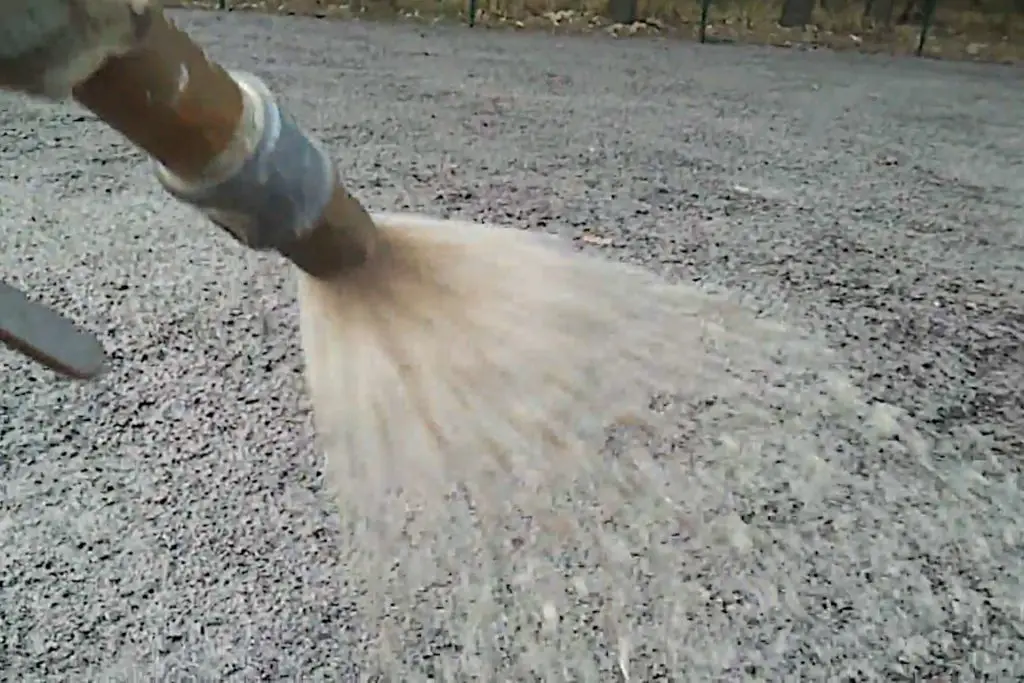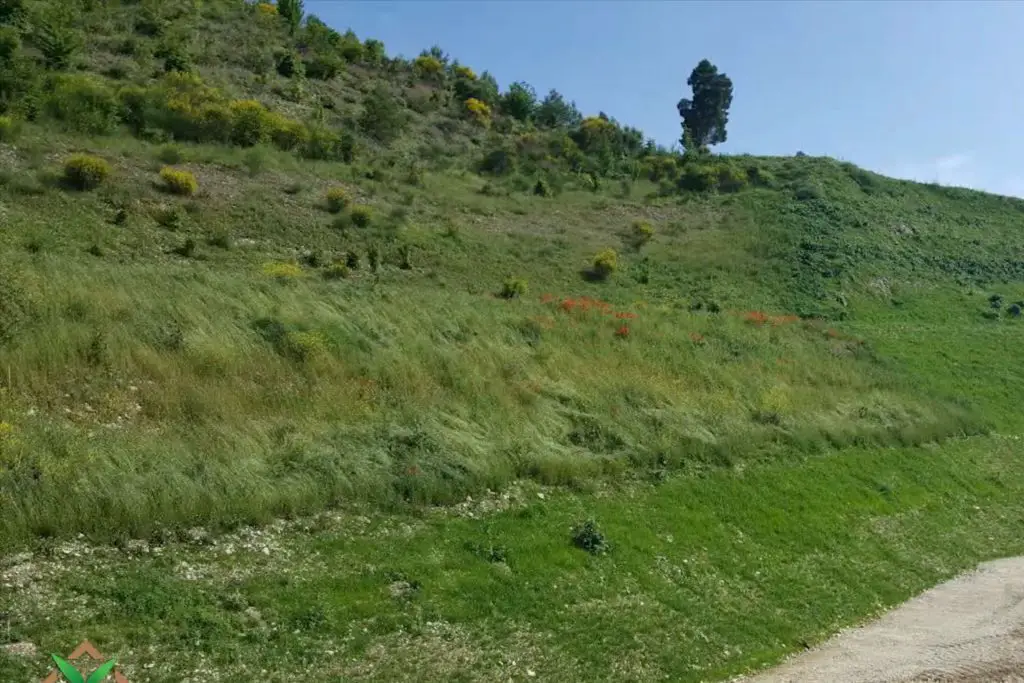How Much Does Hydroseeding Cost? The True Cost of Hydroseeding Your Lawn
As of spring 2023, the average cost of hydroseeding is around $0.15 per sq ft, which is around $5,259 per acre.
How much does hydroseeding cost? There are many considerations that influence the price of a hydroseeding job, These range from the obvious such as the size of the project, to factors you might not have thought about, such as the quality of the existing soil, climate conditions, and the topography of the area to be hydroseeded. Even considerations such as whether the job is residential or public/commercial will have a considerable bearing on the eventual price.
Despite all the possible factors that can affect the price, you will come across a lot of sites giving you ballpark figures when enquiring about the cost of hydroseeding.
Although below, we will provide our own current broad estimate, we will break down the factors that can influence the cost and explain how, under certain conditions, prices can vary widely. This should give you a better understanding of the costs associated with a hydroseeding project and allow you to assess better what you are likely to end up paying.
Current Broad Estimate of The Cost of Hydroseeding

Hydroseeding costs are usually quoted in terms of per square foot or per acre depending on the size of the project.
As of spring 2023, for hydroseeding, you can look to pay between $0.10 and $0.30 per square foot for hydroseeding, with an average being around $0.15, which works out to $5,259 per acre.
In the United States, the average size domestic lawn is a little over 10,000 sq ft, so assuming a lawn of this size at an average of $0.14 per sq ft will give you a cost of 10,000 x 0.14 = $1,400.
This, of course, is a ballpark estimate that makes assumptions that might not be true of your prospective project. However, it does provide you with a useful starting point from which you can gather a more accurate estimate.
Current world events are pushing up the cost of materials, particularly fertilizer and transport costs so the above prices are likely to fluctuate. We will update them regularly.
Factors that Influence the Cost of Hydroseeding
There are many variables in hydroseeding that can influence the cost. Below we list some of the main influences on a hydroseeding’s project cost.
- Ground preparation
- Grass seed choice
- Topography and soil condition
- Climate
- Water costs
- Aftercare costs
Each of these elements will affect either the cost of the hydroseeding mix (changing its components) or will impact the overall cost of a project.
Ground Preparation for Hydroseeding
To get the best results, good ground preparation prior to hydroseeding is essential. Depending on your contractor, this may or may not be included in the cost. One way or another, it should be factored in. Irrespective of if you do it yourself, employ a third party to do it, or it is added to the contractor’s cost, depending on the condition of the ground, it can significantly vary the cost.
A further consideration that has to be taken into account is whether you are hydroseeding on bare ground or hydroseeding on top of your existing lawn, as this can affect the nature of the ground preparation and sometimes the cost.
Of course, if you are undertaking the ground preparation yourself, as many homeowners do, you may discount the cost of doing the work from your budget, but it is worth knowing the value of the work you are undertaking, not least if you need to rent equipment to prepare the ground.
Grass Seed Choice and How it Affects Hydroseeding Cost
One of the key advantages of hydroseeding is that you can use pretty much any type of grass seed or a mix of grass seed to create your lawn. As there are differences in cost between each seed variety, the final choice will influence the overall cost of your hydroseeding project.
There are many different types of hydroseed mixes available, each with its own benefits and drawbacks. Choosing the best type of mix depends largely on factors such as the size of the area being seeded, the amount of water needed, the kind of soil conditions present, and climate.
Prices can fluctuate, but there are price bands that you can put the varieties in. Although you can use pretty much any variety of grass, we will concentrate on the most common varieties used for hydroseeding.
At the less expensive end, the most inexpensive varieties are Ryegrass, Tall Fescue, and Centipede, where prices range from $2-3 per lb.
In the midrange, you have grasses such as Kentucky Bluegrass and Kentucky 31. These currently cost around twice the price per lb as the least expensive band. So expect to pay around $6 per lb
The most costly varieties are Zoysia, Buffalo, Bermuda, and Bahia. These are upwards of 75% more expensive than the midrange grass varieties. These currently cost around $10 or more per lb so, more than three times the cost of the least expensive grass.
There are several considerations that will determine your choice of seed, the most important being climate. Whist topographical factors, such as shade, terrain, and soil condition, can also have a considerable impact. Assuming your contractor is local, he will have a good idea of local climatic conditions and probably soil types, so will advise.
Topography, Erosion Control, and Soil Condition Impact the Cost of Hydroseeding

In general, the topography of the site, such as higher elevations and sloping ground, together with soil conditions and climate, are all elements that can have a significant impact on the overall cost of hydroseeding.
These have been grouped together because they are mitigated through the use of different mulches, tackifiers, polymers, and, in terms of soil quality, specific fertilizers.
If you have ground that slopes more than 1:8 (around 7½o) or hillside (more than 15o) as part of the area that you want hydroseeded, then this can significantly add to the cost. Depending on the steepness of the slope, mulches like wood fiber or cotton fiber matrix mulches and tackifiers will be needed to keep the seeds in place while they germinate. In general, the steeper the slope, the more expensive the cost.
In terms of soil erosion, depending on the extent of the problem, you might need specific mulches, such as bonded fiber matrix, to deal with these issues. These are excellent solutions and work well but will add significant extra cost to a job.
How Much Does Hydroseeding Cost? Water Costs and Climate
One of the broadest elements among these factors is climate. Climate, as we have mentioned, has a considerable say in the choice of grass, and it also matters in terms of the mulch used.
When first planted, the seed is incredibly thirsty as it germinates, and the grass establishes its roots to grow. Because of this, having adequate water, in terms of keeping the ground moist, is vital to the germination and establishment process.
In more temperate conditions, water will generally have time to soak into the ground and provide a constant supply of moisture. However, in arid climates, retaining ground moisture can be a problem. The type of mulch that you use in the hydroseed mixture can affect the amount of moisture the soil retains.
While in a temperate climate, a paper cellulose mulch can be used, in more arid places a full or wood or wood and paper mulch mix are often necessary. Wood fiber mulch has a great water retention capacity that will ensure the aftercare watering program employed is successful.
There is, of course, a considerable price difference, around 60%, between the cost of a full wood fiber mulch and a paper cellulose mulch. Wood fiber mulch currently costs around $40-45 a 50lb bale, whereas paper cellulose mulch costs only around $25 for a 50lb bale. Obviously, the choice of mulch is going to have an important bearing on a project’s cost.
There are other products, such as gel polymers, that can also be added to the hydroseeding mix to help with water retention. Some of these polymers can hold up to 400 times their weight in water but add to the overall cost, although they may balancing this out through the savings on water costs.
Size of Area to Be Hydroseeded
The most obvious factor that has a bearing on cost is the size of the area to be hydroseeded. However, it is not just a pro-rata calculation. Irrespective of the size of the area to be hydroseeded, the same preparation of mix has to take place.
This means that even though most hydroseeding contractors price per square foot, very small areas of ground can cost proportionally more to hydroseed than larger areas. Indeed, you may find that there is a minimum charge that is levied by some firms.
Optional Services that Impact The Cost of Hydroseeding

Aftercare is a very important part of hydroseeding. It is not necessarily included in the hydroseeding price but is often offered as an add-on package.
It is difficult to stress the importance of aftercare for a hydroseeded lawn. If you don’t water the ground properly in the first four to five weeks and feed it with fertilizer after a month, then you might find that seed doesn’t establish itself or, worse still, the seed fails to germinate.
It is true that many homeowners, just as with ground preparation, will look to take on this part of the process themselves. It might appear a lot of work, but if you have an irrigation system in place it is fairly easy to do yourself. If, though, you are going to use a contractor’s aftercare package, you need to factor this into your project cost.
What to Lookout For in Your Contractors Hydroseeding Quote
When you get various quotes from contractors, it is important to study them and see what exactly is part of their package and what is not.
A good contractor will, hopefully, break down his price so that you can see exactly what the makeup is. Does it include ground preparation? Does it state the seed mix, the exact mulch to be used, and what fertilizer is going to be included?
These are important not just so that you get what you pay for but can also affect the aftercare plans that you have with regard to watering and using the right follow-up fertilizer to feed your lawn.
Final Thoughts: How Much Does Hydroseeding Cost?
in terms of how much does hydroseeding cost, it is easy to provide a ballpark average for the cost of hydroseeding, and, for many, the eventual cost will fall within the range. However, as we have noted, there is a multitude of different factors that can impact the end price.
Whether it is size, climate, topography, or seed choice, all will have a bearing on the eventual price you will pay. It is also crucial to consider ground preparation and aftercare costs so that you don’t end up with unexpected expenses.
In reality, no two hydroseeding projects are going to be the same, and you should only use any ballpark figure as a ‘jumping off point’. You need to get fully accurate and detailed quotes to get a true idea of the eventual project’s cost.
Further Reading
- Michigan State University: Establishing a New Lawn Using Seed
- Pennsylvania State University: Lawn Establishment and Cost
